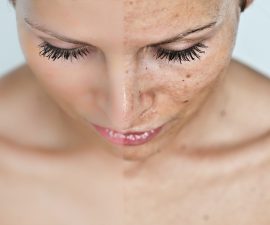A traditional hammam ritual consists of four body care stages. A moment of relaxation in a hot steam room started by the Greeks. Today, hammam is regarded as the Arabic technique for relaxation of the body and soul. What does it involve?
Each of us feels like having a moment of rest. Some people recommend a massage. Others believe in the power of aromatherapy. Why don’t we take a look at the hammam ritual? It is growing in popularity. Going back to ancient methods may be a great idea.
What does hammam mean?
Hammam, simply put, is a hot steam room, known also as a Turkish bath. The word can be understood in two ways. The Turkish ḥamām means a bathroom or restroom whereas the Arabic al-ḥamīm means the power of summer heat.
Who started the Hammam ritual?
Hammam – the steam bath – is nothing new. Greeks and Romans were the precursors who did quite well with making use of the properties of steam. They would heat stones up and pour them with water to create steam. Hot rooms were places where people would meet in ancient times. This type of sauna was spread worldwide by the Arabic countries. The traditional hammam was both the way for beauty care and in-depth cleansing.
Tradition & Modernity
Today, the traditional hammam ritual has been transferred to a modern version. Lots of beauty salons already offer hammam – a relaxing treatment – a combination of a sauna and massage. A black soap (savon noir) is mostly used. An ideal option for those who want to try the Middle East traditional beauty care yet in combination with the achievements of cosmetology. An ‘updated’ hammam ritual differs from the ancient original.
What does hammam involve?
Traditional hammam
Beauty rituals and treatments used to take up more time because people weren’t as busy as we are nowadays. Living a busy life we can’t afford to spend a few hours in a beauty salon – that’s how long an ancient hammam ritual lasted. Having a bath in special pools was the first step. The next one involved moving to a hot steam room where the temperature reached even 50 degrees – it was the main and longest stage. Hammam rituals were accompanied by massages, exfoliation and rubbing exotic oils in. The treatment was finished with another quick bath and drying the body.
Hammam ritual today
Now, hammam lasts much less time and has a different form yet it is still a mix of purification, conditioning and relaxation. It consists of four stages and has been modified for home or salon use.
Hammam – a four-stage beauty care
STAGE 1. Moisturising
We begin the treatment with a traditional steam room. The skin is moist and soft thanks to the heat in the humid conditions. Skin pores open so the body detox takes place. The skin is primed for receiving all nutrients we try to deliver. At home, you can replace steam room with a long warm shower.
STAGE 2. Cleansing
During the next stage, the black savon noir soap is used – a natural soap that has been made using a traditional recipe on the basis of oil and smashed black olives. After applying the soap to the slightly-damp skin, it changes into a creamy, brown lather. Smoothing the lather on the skin is a good way for cleansing the skin and exfoliating dead cells. Just rub the soap in with circular motions to stimulate the blood flow and remove dead skin cells. If we want more intensive effects, we can smooth the savon noir soap with a massage glove e.g. Kessa Scrub Glove. Such a massage should last at least several minutes.
STAGE 3. Nourishing
Moisturised, exfoliated and cleansed skin requires some care. For the hammam ritual, Ghassoul is mostly used – rare, Moroccan, amazingly-conditioning cosmetic clay. After mixing it with water, it turns into a muddy lather which brilliantly washes, degreases and nourishes the skin. It enhances skin elasticity, firmness and hydration. The best application involves smoothing the clay on the skin, letting it dry and finally rinsing it out with warm water.
STAGE 4. Anointment
An aromatic massage with an oil completes the ritual. It is an extremely relaxing stage yet it aims at conditioning the skin, too. A proper mix of oils can give your skin lots of benefits – a moisture boost, repair, softness, elasticity. Argan oil is most popular at this stage of hammam – it is often slightly-heated up for better absorption. Letting the oil be absorbed totally is the best idea.
Hammam – contraindications
This oriental beauty and relaxation treatment should be avoided by pregnant women, people who have breathing problems (e.g. asthma), heart diseases or problems with veins. The hammam ritual is not recommended if you suffer from hypertension. You can’t do the ritual after drinking alcohol.




Leave a Reply